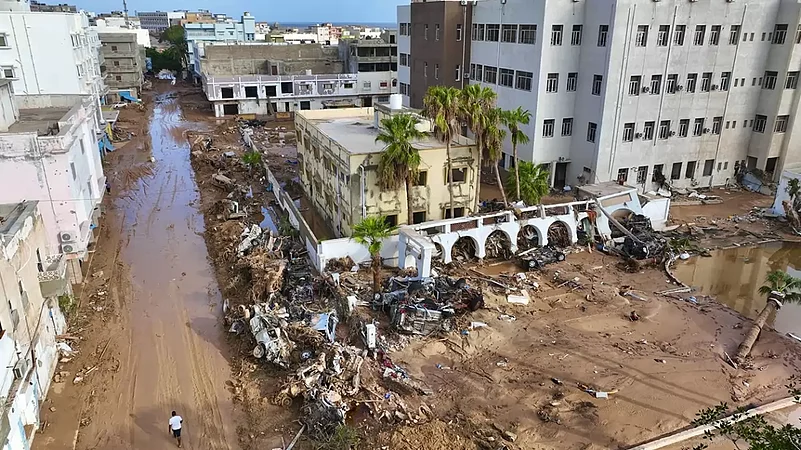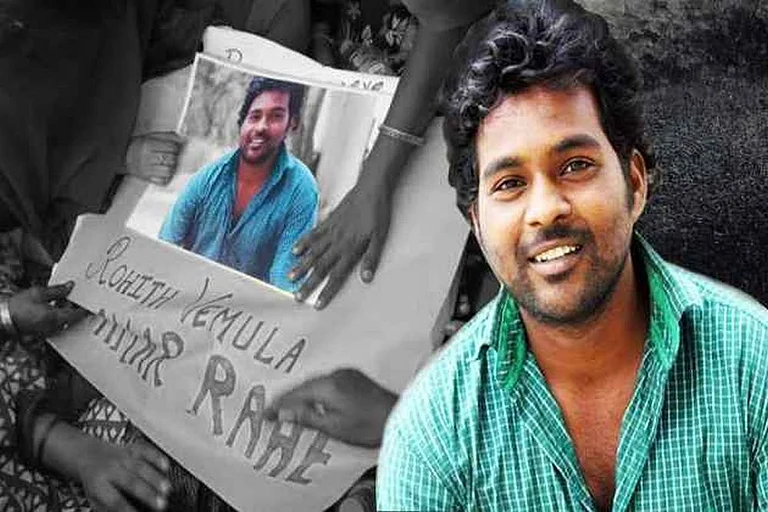The most recent tragedy in Libya, where a storm has wreaked havoc and left thousands more unaccounted for, further worsened the challenges faced by the African nation already torn apart by years of turmoil and discord. The Mediterranean storm ‘Daniel’ that dumped torrential rain on the Libyan coast, setting off flooding, has caused the death of more than 5,100 individuals, while over 10,000 people remain missing in the country.
CNN reported that in Derna, two dams and four bridges collapsed, leading to extensive flooding when Storm Daniel struck on Sunday. According to the United Nations, Libya is the only country which has no climate strategy and is yet to develop it.
Buildings have crumbled down, dams have burst as floodwaters smashed through them, and significant destruction has occurred in several eastern Libyan cities, such as Al-Marj Tobruk, Takenis, Al-Bayada, Battah, and along the entire eastern coastline up to Benghazi. Houses in low-lying areas were completely wiped out, muddy currents, carrying away cars and debris. There are horrifying stories of individuals drowning at sea, while others desperately clung onto rooftops. Numerous bodies are feared to be buried under debris or washed away into the Mediterranean Sea.
Videos taken after the storm reveal water rushing through what's left of the tall buildings in the port city, along with cars flipped over. Later, there are images of bodies placed in rows on the sidewalks, covered with blankets, ready for burial. People who live there say that the only sign of something going wrong was the loud noise when the dams broke. There is no system to give them a prior warning or a plan for them to leave safely.
Two Governments
The reason behind so much damage and so little aid being successfully given to the people is Libya’s system of ‘two governments’. Since 2011, when the NATO-backed Arab Spring uprising toppled Gaddafi government in Libya, the country has been split into two parts – one in the east and the other in the west. Each part has its own government and they are supported by different groups and other countries. This ongoing conflict has resulted in the deteriorating and insufficient infrastructure across the nation.
In Tripoli, Prime Minister Abdul Hamid Dbeibah leads Libya's government, which is the government recognised internationally. In Benghazi, on the other hand, there is another prime minister, Ossama Hamad, who heads the eastern administration. Even though there has been pressure from the international community, including attempts to hold elections in 2021 that ultimately didn't happen, the rival parliaments in these two regions have been unable to come together and work as one unified government.
The other reason that has led to the flooding in the state is growing unrest and lawlessness. Protests erupted last month following news of a secret meeting between Libyan and Israeli foreign ministers, calling for Prime Minister Dbeibah's resignation. In August, clashes between rival militias in the capital killed 45 people, highlighting the influence of armed groups. Libya serves as a transit hub for migrants from multiple countries, with militias and traffickers exploiting the chaos. Despite abundant oil reserves, production is hindered by blockades and security threats, fueling disputes over revenue allocation.


























